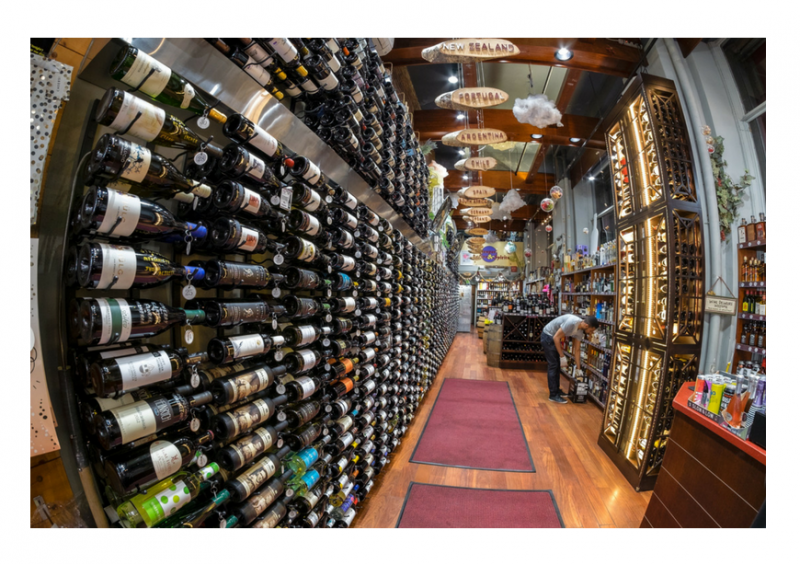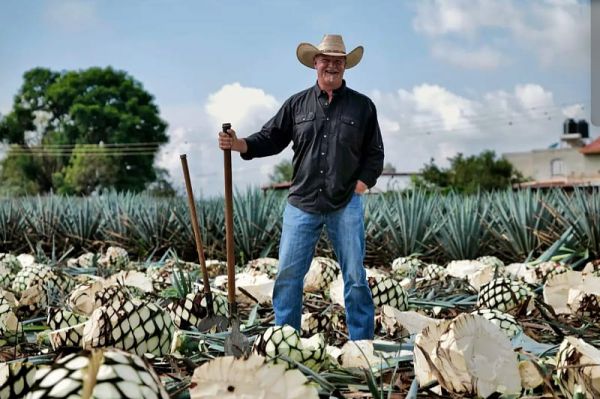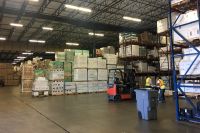Log in to your account
Lost password?Distribution
Introduction to Direct Store Delivery (DSD) Distribution
Why an increasing number of beverage manufacturers are skipping the middle man and taking distribution into their own hands.
13/11/2017

In the world of beverage sales, getting a product onto store shelves is only the first step to success. Once customers start buying a particular beverage brand, the manufacturer must find the best way to keep those shelves stocked and ready. An empty shelf means a lost opportunity for a sale, so suppliers are constantly working to make distribution more consistent and efficient.
While traditional centralized distribution has been a popular model for years, many growing beverage companies have turned to direct store delivery in order to have better control and insight into how their products are selling, as well as to provide attractive savings to their buyers.
Why Direct Store Delivery?
Direct store delivery (DSD) is a form of distribution by which products are delivered from a distributor/supplier directly to the retail store. Although some large manufacturers do have their own distribution warehouses, many sellers prefer DSD because it offers the opportunity to completely skip the warehousing step in the delivery process. It’s an attractive premise for both supplier and retailer – giving the former greater control over their product and reducing the latter’s operating costs significantly.
DSD is ideal for high-velocity products, as bypassing warehouses and distribution centers means that the products can move along at a much faster pace. When a manufacturer introduces a new product, DSD greatly increases speed to market. In fact, going direct can ensure that new items arrive as much as two weeks sooner than going through distribution centers.
In addition to this, DSD is an attractive distribution strategy for beverage companies because it can result in as much as a 5 to 10% reduction in fees and time spent reconciling invoices.
Does DSD Make Sense for Your Business?
Most manufacturer-distributor-retail relationships work on a centralized distribution model in which product moves from the manufacturer to a warehouse, where it may be stored for a period of time. This works well for products that have a long shelf life, have a huge turnover volume or that aren’t easily damaged.

If there’s a huge demand for a product, it’s prone to get damaged from excessive handling, or it’s not shelf-stable, DSD affords the best strategy to keep up with high-volume sales while ensuring that the product arrives undamaged and fresh every time. DSD allows manufacturers greater control over the handling of their items as they ship to the retailer, helping them to ensure that their product doesn’t spend a long time in the supply chain. Greater control over one’s product equals greater control over one’s brand and reputation.
Volume and location also factor into the equation. If a winery is producing and selling a high volume of wine to certain retail establishments, DSD is an effective strategy. It’s also useful when the retailers are in a close proximity to the winery. If the business is producing the product to sell to establishments that are long distances away, the product may be better suited to go through a distribution center.
Benefits to Retailers
As all manufacturers and distributors well know, anything that shaves additional cost off for the retailer can help sweeten the deal and result in one product being chosen over another. Such is the case with DSD, which can help reduce labor costs by as much as 25%. Managing inventory and reordering products – and especially high-volume ones – is time-intensive and takes attention away from running the store and providing customer service. With DSD, delivery staff keep track of inventory and ensure that shelves are always fully stocked, taking the pressure off of store employees to do so.
Retailers or restaurants with tight delivery windows can also benefit from the DSD distribution model, as it allows them to work with the manufacturer to ensure that the product arrives during certain times of the day. Because of these factors, a manufacturer who can offer their retailer DSD distribution also offers the savings and convenience provided by this model.
Is It Hard to Create a DSD Model?
As a company’s order volume begins to increase, they may realize that the time is ripe for a shift from centralized distribution to DSD. When this happens, it’s essential that the supplier do their homework, looking at each of their retailers and understanding the kind of order volume and the delivery timeframe they should expect from each store. Once this information has been gathered, the company will be able to figure out the ideal way to route deliveries to ensure that each buyer receives a fresh stock in a timely manner.
Taking control of one’s distribution also means factoring in steps to prevent loss, breakage, and theft along the way. The latter is especially a concern with alcoholic beverages – an attractive target for thieves. Businesses must develop a plan to train delivery drivers to ensure that the product remains fresh, safe, and secure throughout the multiple stops on each day’s delivery route. Some companies employ security cameras and GPS devices to ensure that they always know what’s going on with each shipment.

As with most endeavors these days, technology is here to help those who decide to take the dive into DSD. Variety of applications such as Valomnia, Lawson, NetERP, from companies like High Jump and Mobile Frame, allow delivery drivers to use handheld devices to capture proof of delivery, as well as update store inventory numbers and place orders. Technology can also help in network mobility, multihop network, inefficient routes, such as traffic problems that may slow down drivers, costing fuel, time, and money. Onsite invoicing and payment ensure that manufacturers always have the cash flow they need to keep their business moving.
An Effective Strategy for a Growing Beverage Business
The bottom line? While DSD probably isn’t the best strategy for low-volume startups without the cash to create a DSD infrastructure, for beverage manufacturers who are seeing their product velocity and order volume begin to grow, DSD is a distribution strategy that’s worth serious consideration. In addition to giving a company greater control over its product, delivery, invoicing, and payments, it allows them to offer attractive savings to their retailers – something that could help put them ahead of the competition.
In the world of beverage sales, getting a product onto store shelves is only the first step to success. Once customers start buying a particular beverage brand, the manufacturer must find the best way to keep those shelves stocked and ready. An empty shelf means a lost opportunity for a sale, so suppliers are constantly working to make distribution more consistent and efficient.
While traditional centralized distribution has been a popular model for years, many growing beverage companies have turned to direct store delivery in order to have better control and insight into how their products are selling, as well as to provide attractive savings to their buyers.
Why Direct Store Delivery?
Direct store delivery (DSD) is a form of distribution by which products are delivered from a distributor/supplier directly to the retail store. Although some large manufacturers do have their own distribution warehouses, many sellers prefer DSD because it offers the opportunity to completely skip the warehousing step in the delivery process. It’s an attractive premise for both supplier and retailer – giving the former greater control over their product and reducing the latter’s operating costs significantly.
















